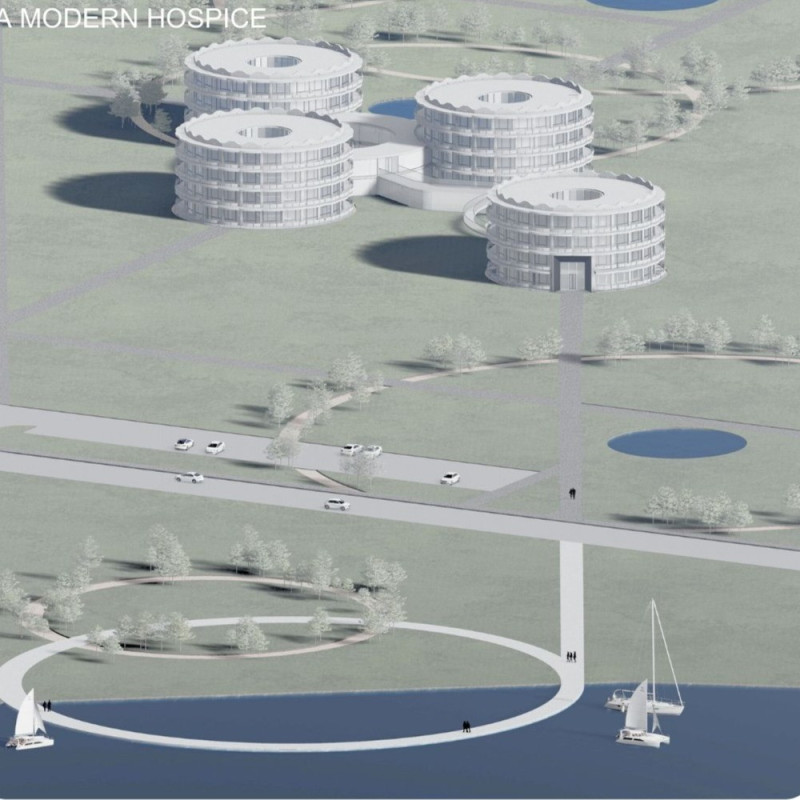5 key facts about this project
At the heart of the project is a multifunctional space designed to cater to various activities. This versatility is encapsulated in the architectural layout, which includes open areas for community gatherings, private workspaces, and recreational facilities. The design prioritizes accessibility and inclusivity, ensuring that all potential users can navigate and utilize the space effectively. The incorporation of large windows and open corridors promotes natural light, enhancing the overall ambiance and reinforcing the connection between indoors and outdoors.
Materiality plays a significant role in defining the character of the project. The selection of materials was guided by a commitment to sustainability and durability. Predominantly, the use of locally sourced timber is evident throughout the structure, providing both a renewable resource and a warm aesthetic. Complementing the timber, concrete elements ensure the stability and longevity of the building. Glass is also prominently featured, allowing for transparency and continuity within the design. This careful consideration of materials not only informs the visual language of the architecture but also contributes to energy efficiency, as the building is equipped with solar panels and green roofs to enhance its ecological footprint.
The unique design approaches showcased in this project include an emphasis on biophilic design principles. By integrating natural elements into the architecture, such as indoor gardens and water features, the project fosters a connection to nature, which has been shown to enhance well-being. Furthermore, the design incorporates passive heating and cooling techniques, utilizing the building's orientation to maximize thermal comfort without relying solely on mechanical systems. These strategies reflect a forward-thinking approach to architecture that prioritizes the well-being of inhabitants and the environmental impact of the building.
Community involvement was a pivotal aspect of the design process, with extensive consultations held to ensure that the final outcome resonated with the intended users. This participatory approach not only strengthened the project's relevance but also established a sense of ownership among the community. The architectural ideas stemming from these discussions manifested in various design features, such as flexible spaces that can be adapted for different uses, ensuring the building remains functional for years to come.
In terms of architectural details, the project's façade is particularly noteworthy. By combining various textures and lines, it serves as both a protective barrier and a visual narrative of the community’s heritage. The rhythmic pattern of the timber accents juxtaposed against the smooth surfaces of concrete invites closer examination and appreciation from passersby. Moreover, the project’s landscaping is intentionally designed to create inviting entrances and outdoor spaces that encourage social interaction and community use.
Overall, this architectural project transcends mere functionality; it embodies a holistic approach to design that harmonizes with nature and prioritizes human experience. The thoughtful integration of sustainable practices, community involvement, and design adaptability makes it a valuable asset to the urban environment. For readers seeking to understand the intricacies of this project further, exploring the architectural plans, sections, and designs will provide deeper insights into the innovative ideas and solutions that were implemented. Delving into these details will enrich the understanding of how architecture can thoughtfully respond to contemporary challenges while enhancing community life.


 Patrycja Oliwia Bomba
Patrycja Oliwia Bomba 




















